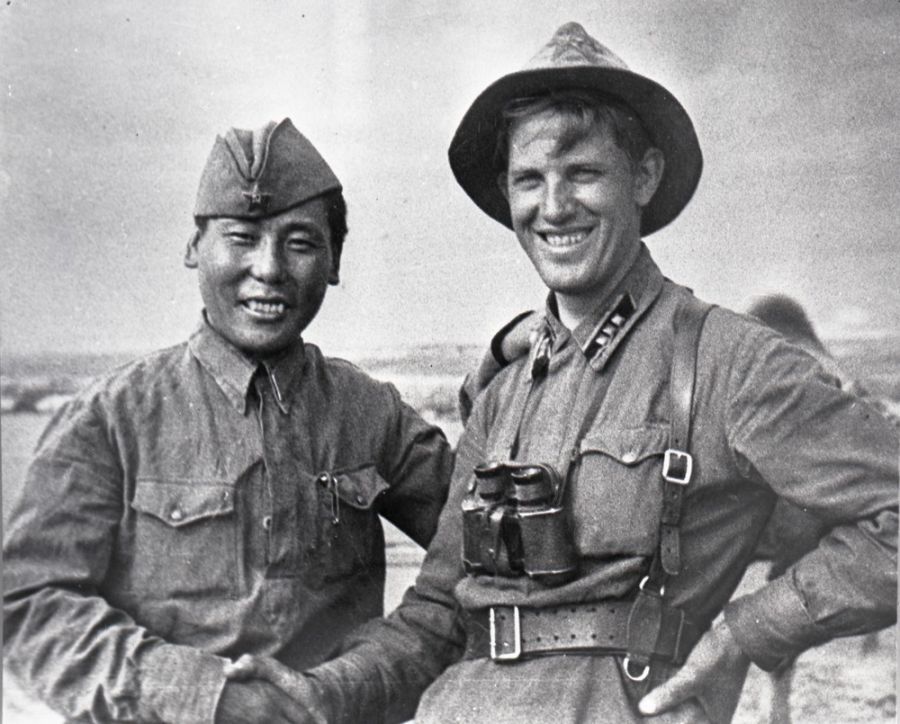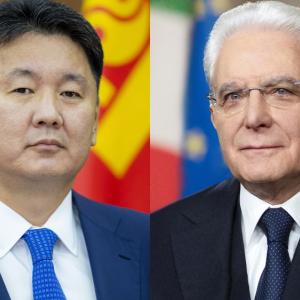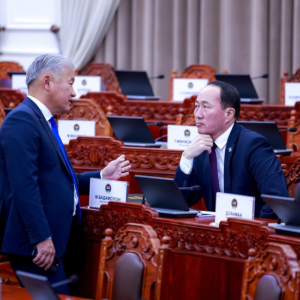The decisive battle at Khalkhin Gol
The Mongol Messenger
Written by Erdene Bold
One of the major events that had a significant role in the century old friendship between Mongolia and Russia is the battle that took place at Khalkhin Gol. During the time of hardship, the peoples of the two countries helped one another, forming a bond of brotherhood. A part of history that involved helping the people of the steppe to establish their own independent country, and a decisive time that defined future bilateral relations.
Alongside considering the Khalkhin Gol Battle as part of the prologue of World War II, modern historians of Russia as well as other countries agree that the attack by Japanese militarists may have also had the goal to create an opportunity for Nazi Germany to invade the Soviet Union from the west. The main reason for starting a war was simple as that. While Germany, who was defeated in World War I, had intentions to conquer Europe after regaining its strength, Japan had its own plans to rule the east. With the knowledge that the Soviet Union would hinder their plans for gaining power, Japanese rulers began to implement aggressive policies from the late 19th century, targeting countries and regions such as Manchuria, China, and the Far Eastern region of Russia. As the island nation was overly dependent on import commodities, they aimed to rule over lands that had natural resources at any given cost. With the decision to resolve the matter through militaristic methods, Tokyo developed a development program that involved East Asia. With the role of supplying Japan with the necessary commodities, the region covered a large territory which included North Sakhalin, Kuril Islands, eastern Siberia, Manchuria, Outer and Inner Mongolia, China, Tibet, reaching the region that was referred to as western India by the Dutch to the south, and the island of Hawaii to the east. Ruthlessly eliminating everything that stood in their way, the nation planned to conquer China, Manchuria, and Mongolia, and start a war in Siberia and the Far East. As the Japanese army was known for their ruthlessness and fanaticism at the time, Mongolia was faced with danger not long after. In the spring of 1939, Soviet spy Richard Sorge had even warned that an armed conflict might occur due to the plans for aggression by the Japanese.
According to the papers written by Japanese historians (there have yet to be any changes made), if the side of the Soviet Union was not involved, there would have been no territorial dispute between the Mongolians that lived in Mongolia and Manchuria, resulting in no battles taking place at Khalkhin Gol. However, they had forgotten to mention one important factor. It was in the 1930s when Japan launched a large-scale militaristic operation to conquer China due to conflict, establishing Manchukuo near the borders of Mongolia and the Soviet Union. From the state’s territory, it was possible for the Japanese army to attack in three directions: the Soviet Union, Mongolia, and China. Shortly after, militaristic operations began to be carried out in the territory of Mongolia, rather than Manchuria. Thus, there is no basis to accuse the side of Mongolia-Soviet for starting a war as it would merely be an attempt to distort historical events. Furthermore, the Soviet authority in charge of militaristic and political matters considered the following Declaration as important in order to understand the policy of Japan at the time:
“...The Red Army would cause difficulties in entering the territory of Manchuria, and especially Mongolia. For this reason, it is necessary to use China as a shield, directing the Red Army to them. There is no doubt that there would be conflict with the Soviet Union in the near future. The Soviets will be at the eastern railroads of China, where the roads lead to Manchuria and Mongolia. This particular region would cause significant issues for the state to be established in Manchuria. Thus, there is no choice but to battle against the Soviets once again, and the battles will take place in the territory of Manchuria, specifically the northern region of Manchuria, as well as in the territory of Mongolia.”
Soviet leaders were very well informed about how dangerous the situation was. At an executive meeting of the Red Army that took place in 1935, Joseph Stalin had even specifically informed about how dangerous the Japanese army was as it had recently conquered Manchuria. Noting that the Soviet Union would lose control over Siberia and the Far East if the Japanese army closes off the Trans-Siberian railway at Lake Baikal by utilizing the territory of Mongolia, he said that Mongolia would lose its independence if no military assistance was provided.
Establishing a mutual agreement, the two countries then signed a protocol of mutual assistance in Moscow on March 12, 1936. The Mongolian-Soviet agreement ended up becoming a guarantee for Mongolia to continue to keep its independence. It should also be noted that this decision that was made at the Kremlin was a decisive moment during the time of high tension. With Mongolia as one of the main battlefields over 80 years ago, it could be said that this wave of aggression in Asia and Europe decided the “trend” for World War II. However, this battle that took place in the territory of Mongolia was not merely an armed conflict at the border. At the Khalkhin Gol Battle, hundreds of soldiers as well as several hundreds of tanks and aircraft were utilized as it took place over the course of four months. Fighting for life and death, the Red Army of the Soviet Union fought alongside the Mongolian army for the country’s independence. The side of Mongolia and the Soviet Union had a joint victory against Japanese aggressors at the cost of 9,703 Soviet soldiers and 165 Mongolian soldiers. The battle further strengthened the relations between Mongolia and the Soviet Union. With all the proof and documentation available, it would be wrong to distort history. The Soviet Union helped create a path for Mongolia to keep its independence by protecting the country from foreign aggressors. And it was this historical event that fortified the friendship between the peoples of the two countries.
Review:
The 1939 Khalkhin Gol Battle was a great challenge for the two countries’ strong friendship and cooperation that was established in 1921. At the time, the side of Japan conquered the northeastern region of China and Manchuria through its aggressive, militaristic policy. The basis for the joint victory at Khalkhin Gol was the 1936 Mongolia-Soviet Protocol of Mutual Assistance. The battle is considered as a model example of Mongolian-Soviet friendship. To pass down knowledge about the historic event of the two countries, works are being carried out to restore historical landmarks and structures, and developing research in the fields of militaristic history and archeology. I believe that more attention should be given to the organization of such works.
Senior Advisor at the Office of the President of Mongolia, Colonel T.Ganbat
 Ulaanbaatar
Ulaanbaatar














































































